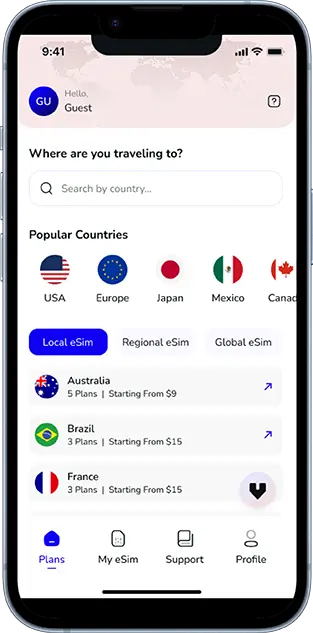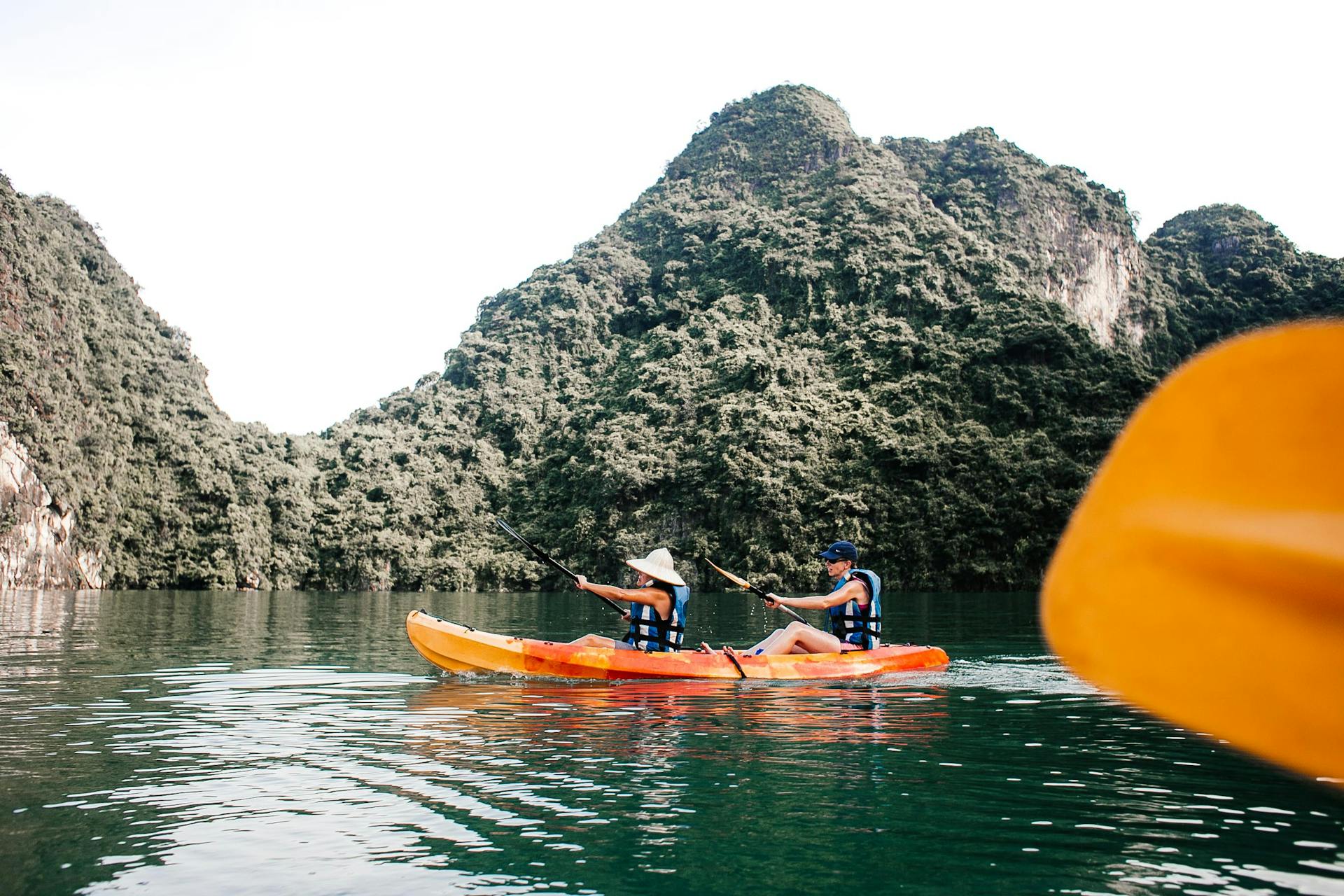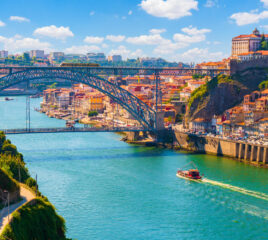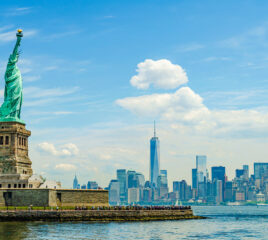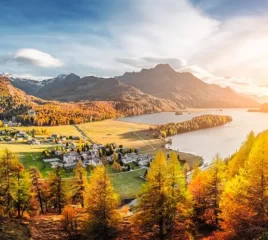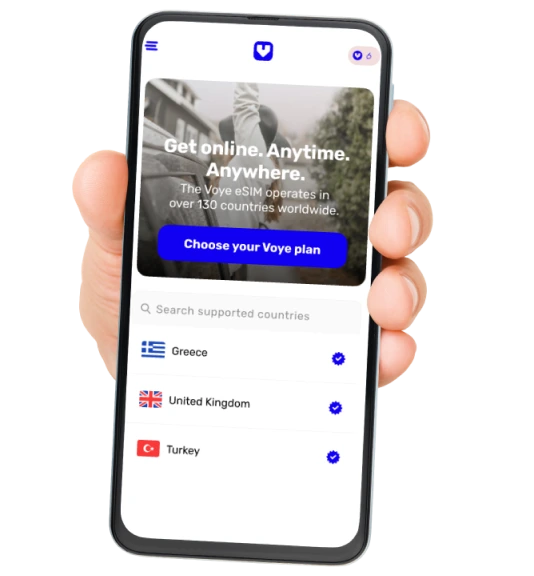Note that iPhone devices from Mainland China aren’t eSIM compatible. Also iPhone devices from Hong Kong and Macao aren’t compatible (except for iPhone 13 Mini, iPhone 12 Mini, iPhone SE 2020 and iPhone XS)
Vietnam is a land of contrasts—buzzing cities, misty mountains, rice terraces, and sweeping coastlines. But beyond the postcard-perfect landmarks lies a watery world of hidden lagoons, cave tunnels, and quiet rivers waiting to be explored by paddle.
Kayaking through Vietnam’s lesser-known waterways isn’t just a physical adventure—it’s a deeply immersive experience into the country’s rhythms, nature, and soul. With a paddle in your hands and a data-ready eSIM like Voye Global in your phone, you can chart your own quiet route through a country shaped by water.
Paddle Freely, Connect Instantly
Get fast data access even in remote rivers and floating villages.
Why Kayaking in Vietnam Is So Unique
- Diverse landscapes: Limestone karsts, mangrove forests, and jungle-wrapped bays
- Low-impact travel: Eco-friendly and silent, perfect for responsible tourism
- Cultural encounters: Paddle past floating markets, riverside temples, and stilted villages
- Access to hidden gems: Reach places where boats and buses can’t go
And with a reliable mobile connection from a Voye eSIM, you’ll have access to maps, bookings, translations, and safety updates wherever your paddle takes you.
Best Hidden Kayaking Spots in Vietnam
1. Lan Ha Bay – Quieter Cousin of Halong
Lan Ha Bay shares the same spectacular limestone formations as Halong Bay, but without the tourist crowds. You’ll glide past floating fishing villages, hidden coves, and green islets—with the sound of your paddle echoing off the rocks.
- Base Town: Cat Ba Island
- Best For: Cave kayaking, wildlife sightings, solitude
- Recommended Operator: Cat Ba Ventures or Asia Outdoors (half-day to 3-day trips)
Pro Tip: Download your maps ahead and use your Voye eSIM to coordinate pickup points or share your route in real time.
2. Ba Be Lake – Freshwater Escape in the North
Tucked inside Ba Be National Park, this freshwater lake is surrounded by limestone cliffs, ancient jungle, and ethnic minority villages.
- Base Town: Ba Be District, Bac Kan Province
- Best For: Peaceful lake paddling, jungle river detours
- Unique Highlight: Puong Cave – paddle straight through this massive limestone tunnel
You’ll likely be the only paddler on the water. Booking eco-lodges or arranging homestays is easier when you have always-on connectivity through Voye’s Vietnam plan.
3. Mekong Delta Backwaters – Life on the River
Forget big river cruises. Kayaking through the backwaters of the Mekong Delta lets you witness everyday life up close—farmers hauling coconuts, children bathing, monks crossing wooden bridges.
- Base Towns: Can Tho, Ben Tre, or Vinh Long
- Best For: Cultural immersion, floating markets, early-morning paddles
- Experience Type: Half-day village circuits or full-day guided paddling
Bring your waterproof phone pouch and tether with Voye eSIM to translate signs, navigate local markets, or access offline tide data.
4. Phong Nha-Ke Bang – Paddle into the Caves
More famous for trekking and caving, this UNESCO site also offers river kayaking through karst valleys and cave rivers.
- Base Town: Phong Nha Village, Quang Binh
- Best For: Paddle-through caves, jungle treks, and off-grid adventure
- Must-Do: Kayak the Son River, then hike into Hang En or Tu Lan Caves
Many of these trips involve multi-day remote stays. Voye’s eSIM helps keep you in contact with guides and accommodation—even when you’re deep inland.
Your Adventure, Always Online
Translate, book, and explore Vietnam’s waterways without signal loss.
Best Time to Kayak in Vietnam
- North Vietnam (Lan Ha, Ba Be, Phong Nha):
- Best: October–April (dry season, calm water)
- Avoid: August–September (heavy rain)
- South & Central Vietnam (Mekong, Hoi An):
- Best: December–May
- Avoid: Peak summer if heat-sensitive
Always check weather and tide forecasts the night before. Voye makes this easy with real-time data access in every region.
Tips for Responsible & Safe Kayaking
- Use local eco-certified guides for safety and cultural respect
- Pack waterproof bags and sun protection
- Respect local water traffic, especially in Mekong canals
- Download offline maps ahead of time
- Use a data plan like Voye’s to stay reachable and safe
Why Use Voye Global in Vietnam?
When you’re paddling through off-grid places or switching towns frequently, a Voye Global eSIM keeps you seamlessly connected—no queues at SIM kiosks or confusing paperwork.
Key Benefits for Adventurers:
- No physical SIM swap needed
- Instant QR-code activation
- Prepaid with no hidden fees
- Works across all major Vietnamese networks
- Great coverage—even in remote zones
- Supports hotspot sharing for your group or guide
How to Set Up Voye eSIM for Vietnam
- Go to our plans page.
- Choose a Vietnam plan or an Asia regional plan
- Receive your QR code instantly
- Scan, install, and you’re online in minutes
No registration, no roaming charges, no hassle.
Suggested Multi-Day Itinerary: Kayak + Culture
Day 1–2: Land in Hanoi → Travel to Cat Ba → Kayak Lan Ha Bay
Day 3–4: Transfer to Ba Be Lake → Overnight in a homestay → Paddle Puong Cave
Day 5–6: Fly south to Can Tho → Explore Mekong’s waterways
Day 7–8: Return to Hanoi or continue to Phong Nha for cave kayaking
Use your Voye eSIM throughout to manage travel, book stays, and stay safely connected across regions.
Stay Connected on Water & Land
Perfect for navigating, booking, and sharing your Vietnam paddle journey. Use code VOYE15 for 15% off.
FAQs – Kayaking in Vietnam
Is kayaking in Vietnam safe for solo travelers?
Yes, if you use licensed guides and stay on mapped routes. Using Voye eSIM helps with real-time location sharing and translation.
Can I rent kayaks or do I need to bring my own?
Most tour operators and eco-lodges provide kayaks. No need to bring one.
Do I need a guide?
For off-grid or cave routes, yes. In calm bays or lakes, independent kayaking is possible.
Is mobile signal strong in these regions?
Generally yes—but it varies. A Voye eSIM ensures strong signal by partnering with multiple networks.
What should I bring for a kayaking trip?
- Lightweight dry bag
- Water shoes or sandals
- Quick-dry clothes
- Waterproof phone pouch
- Hat, sunscreen, insect repellent
- Offline maps and active mobile data
Seamless Mobile Data Everywhere
